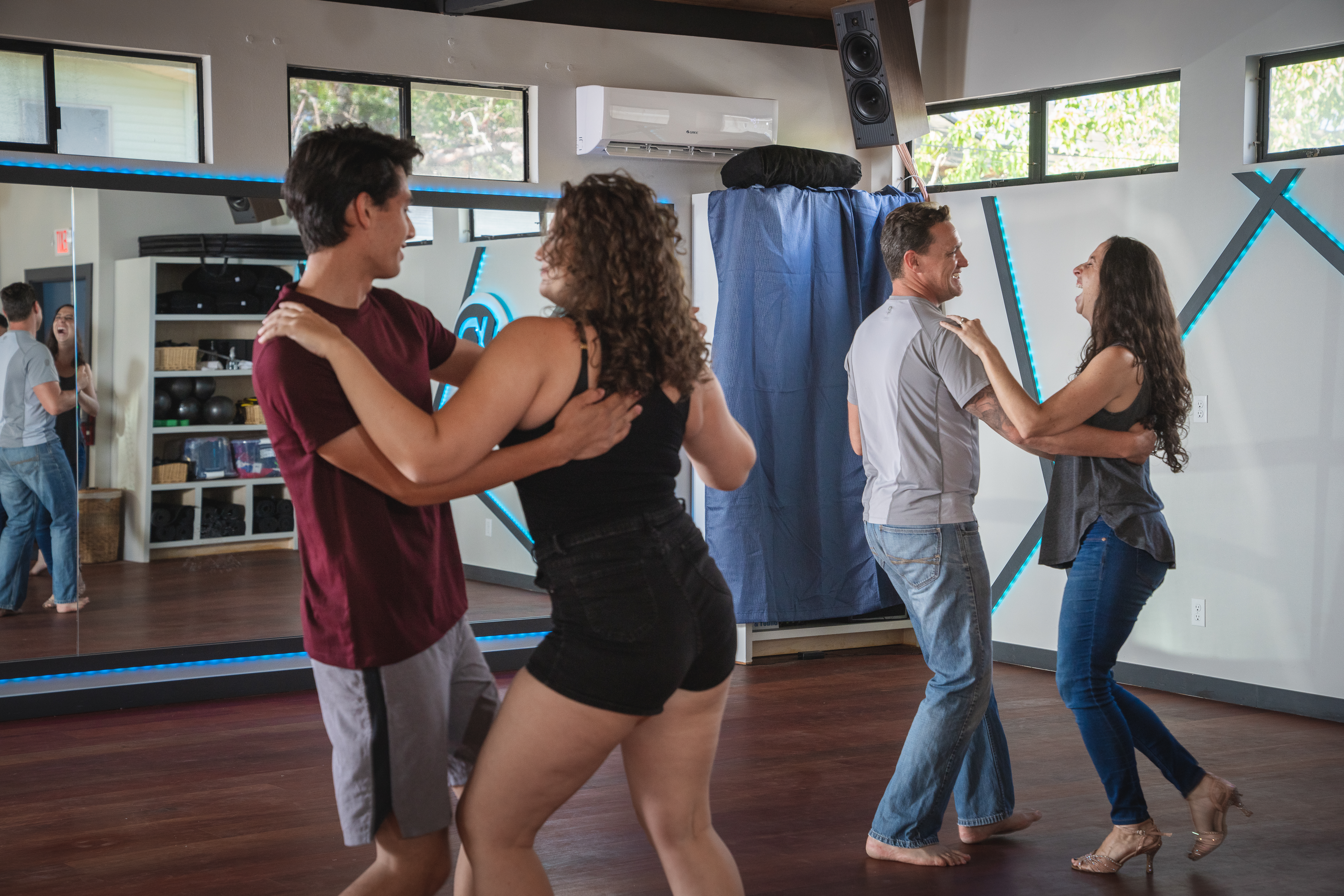What are Swing Dance and Social Dance?
Swing dance is a vibrant, energetic style of dance that originated in the African American communities during the 1920s and 1930s, flourishing alongside the swing jazz music of the era. It encompasses several styles, including Lindy Hop, Charleston, Shag, and Balboa, each with its unique flavor and history. Swing dance is characterized by its lively, syncopated rhythms, improvisational nature, and the playful interaction between partners.
Social dance, on the other hand, refers to a broad category of dances that are performed primarily for socializing and enjoyment rather than for performance or competition. This category includes a wide array of styles, such as salsa, tango, waltz, and, of course, swing dance. Social dances are typically partner dances, though they can also include line dances and circle dances, and they are often seen at social gatherings, dance clubs, and community events.
What to Expect in a Class
Walking into your first swing dance or social dance class can be both exciting and a bit nerve-wracking. Here’s what you can typically expect:
1. Warm-Up and Basic Steps: Classes usually start with a warm-up to get everyone moving and comfortable. Instructors will then introduce the basic steps and rhythms of the dance. For swing dance, you might learn the basic 6-count or 8-count footwork, while a social dance class could begin with foundational steps specific to the style, such as the basic salsa step or the waltz box step.
2. Partner Work: Most social dances involve dancing with a partner. You’ll practice the basic steps with a partner, learning how to lead or follow. Instructors often rotate partners frequently, allowing everyone to dance with multiple people. This helps you adapt to different partners’ styles and improve your dancing. But don’t worry, you don‘t actually NEED a partner to attend a class at Waikapu Danceworks!
3. Learning Patterns and Moves: Once you’re comfortable with the basics, the class will introduce more complex patterns and moves. In swing dance, this could include turns, spins, and dips, while in salsa, you might learn cross-body leads and shines.
4. Practice and Feedback: Classes often include time for practice, where you can dance to music and receive feedback from the instructor. This is crucial for developing your skills and gaining confidence on the dance floor.
5. Cool Down and Social Time: The class may end with a cool-down period and a chance to socialize with other dancers. This is a great time to ask questions, get to know your fellow dancers, and make new friends. Bonus: we even incorporate Socials in many of our Swing Dance classes so you get the chance to practice, try new partners, and have fun!
Why You Should Take a Dance Class
1. It’s Fun!: First and foremost, dancing is fun… duh! The joy of moving to music, the thrill of mastering new steps, and the social interaction all contribute to a fantastic experience.
2. A Great Workout: First and foremost, dancing is fun… duh! The joy of moving to music, the thrill of mastering new steps, and the social interaction all contribute to a fantastic experience.
3. Social Connection: First and foremost, dancing is fun… duh! The joy of moving to music, the thrill of mastering new steps, and the social interaction all contribute to a fantastic experience.
4. Mental Benefits: Learning to dance challenges your brain. You’ll improve your memory, coordination, and concentration as you learn and recall steps and patterns. Dancing has also been shown to reduce stress and boost overall mental well-being.
5. Cultural Appreciation: Learning to dance challenges your brain. You’ll improve your memory, coordination, and concentration as you learn and recall steps and patterns. Dancing has also been shown to reduce stress and boost overall mental well-being.
Benefits of Taking a Dance Class
1. Improved Physical Health: Regular dancing improves heart health, increases stamina, strengthens muscles, and enhances flexibility. It also aids in weight management and improves overall physical fitness.
2. Enhanced Social Skills: Dancing improves communication skills, teaches you to work as a team, and builds confidence in social interactions. It’s a great way to break the ice and build lasting relationships.
3. Mental Sharpness: Dancing keeps your brain sharp. It improves cognitive function, enhances memory, and has been linked to a reduced risk of dementia in older adults.
4. Emotional Well-Being: Dancing is a powerful mood booster. It reduces stress, combats anxiety, and releases endorphins, the body’s natural feel-good chemicals.
5. Creative Expression: Dance is a form of artistic expression. It allows you to express yourself creatively, explore your emotions, and connect with music in a deeply personal way.

So whether you’re looking to pick up a new hobby, improve your fitness, meet new people, or simply have fun, swing dance and social dance offer a wealth of benefits. So why not step onto the dance floor and discover the joy of dancing for yourself? Check out our class schedule today!
